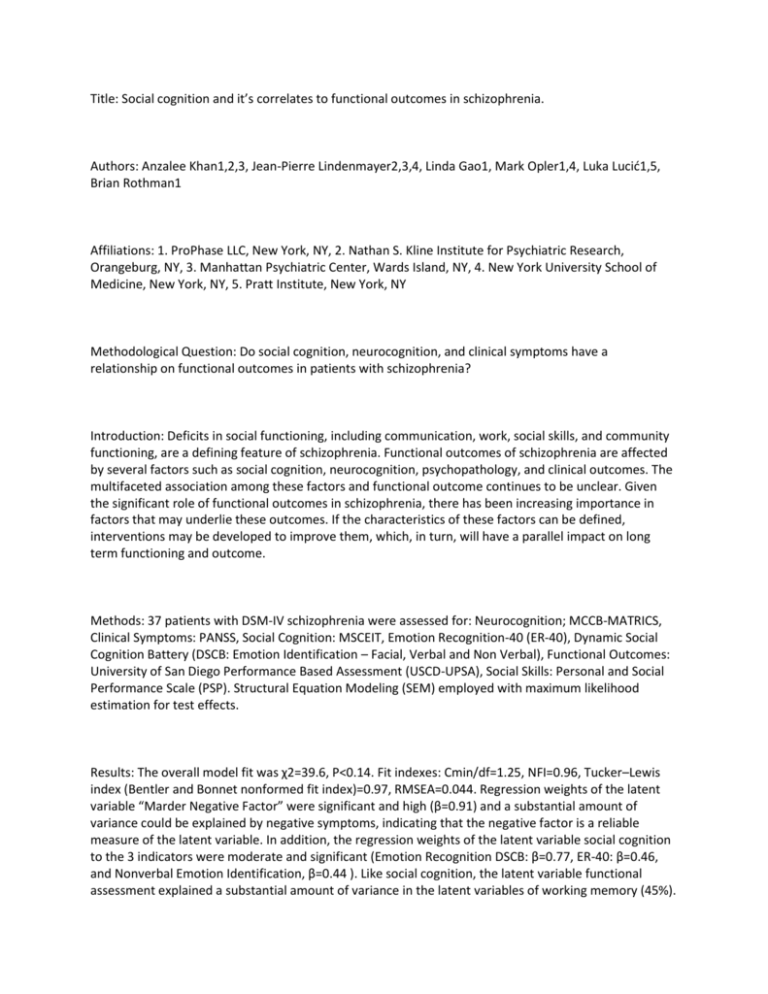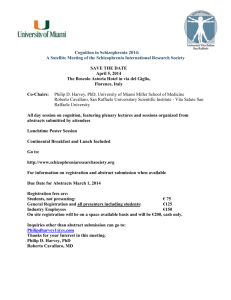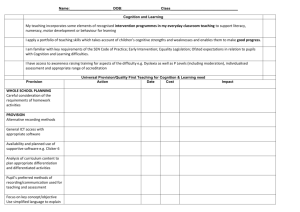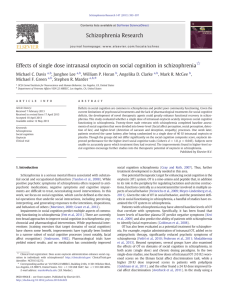Khan_Abstract
advertisement

Title: Social cognition and it’s correlates to functional outcomes in schizophrenia. Authors: Anzalee Khan1,2,3, Jean-Pierre Lindenmayer2,3,4, Linda Gao1, Mark Opler1,4, Luka Lucić1,5, Brian Rothman1 Affiliations: 1. ProPhase LLC, New York, NY, 2. Nathan S. Kline Institute for Psychiatric Research, Orangeburg, NY, 3. Manhattan Psychiatric Center, Wards Island, NY, 4. New York University School of Medicine, New York, NY, 5. Pratt Institute, New York, NY Methodological Question: Do social cognition, neurocognition, and clinical symptoms have a relationship on functional outcomes in patients with schizophrenia? Introduction: Deficits in social functioning, including communication, work, social skills, and community functioning, are a defining feature of schizophrenia. Functional outcomes of schizophrenia are affected by several factors such as social cognition, neurocognition, psychopathology, and clinical outcomes. The multifaceted association among these factors and functional outcome continues to be unclear. Given the significant role of functional outcomes in schizophrenia, there has been increasing importance in factors that may underlie these outcomes. If the characteristics of these factors can be defined, interventions may be developed to improve them, which, in turn, will have a parallel impact on long term functioning and outcome. Methods: 37 patients with DSM-IV schizophrenia were assessed for: Neurocognition; MCCB-MATRICS, Clinical Symptoms: PANSS, Social Cognition: MSCEIT, Emotion Recognition-40 (ER-40), Dynamic Social Cognition Battery (DSCB: Emotion Identification – Facial, Verbal and Non Verbal), Functional Outcomes: University of San Diego Performance Based Assessment (USCD-UPSA), Social Skills: Personal and Social Performance Scale (PSP). Structural Equation Modeling (SEM) employed with maximum likelihood estimation for test effects. Results: The overall model fit was χ2=39.6, P<0.14. Fit indexes: Cmin/df=1.25, NFI=0.96, Tucker–Lewis index (Bentler and Bonnet nonformed fit index)=0.97, RMSEA=0.044. Regression weights of the latent variable “Marder Negative Factor” were significant and high (β=0.91) and a substantial amount of variance could be explained by negative symptoms, indicating that the negative factor is a reliable measure of the latent variable. In addition, the regression weights of the latent variable social cognition to the 3 indicators were moderate and significant (Emotion Recognition DSCB: β=0.77, ER-40: β=0.46, and Nonverbal Emotion Identification, β=0.44 ). Like social cognition, the latent variable functional assessment explained a substantial amount of variance in the latent variables of working memory (45%). Impact of social cognition on negative symptoms (β=0.91) was greater than the direct impact of social functioning (β=0.78) and functional assessments (β=0.63). Conclusions: This study suggests that 49% of negative symptoms could be explained by impaired social cognition and that 49% of social functioning skills could be explained by social cognition. Our findings suggest that social cognition may be an essential target to improve functional outcomes. These findings provide evidence that may help develop novel interventions. Disclosure: The authors do not have any disclosures to report.






